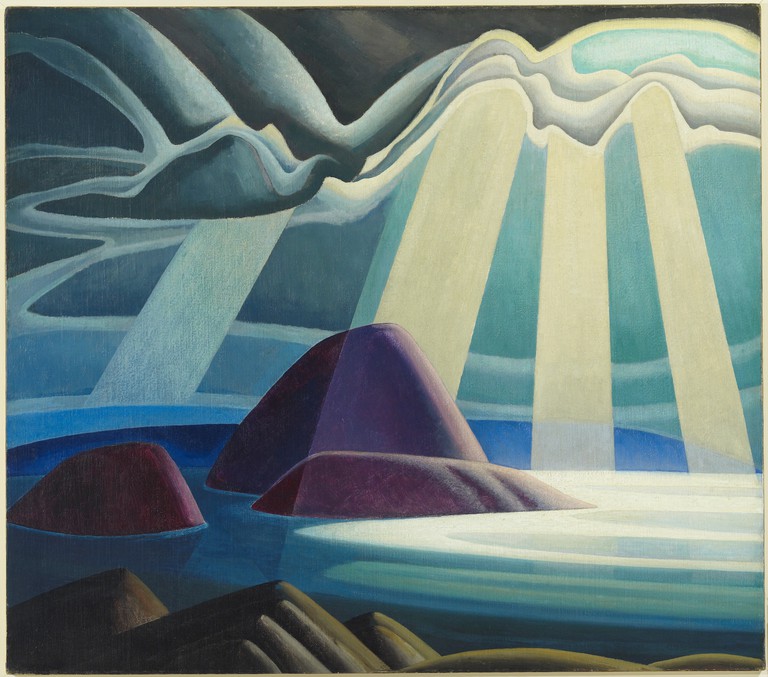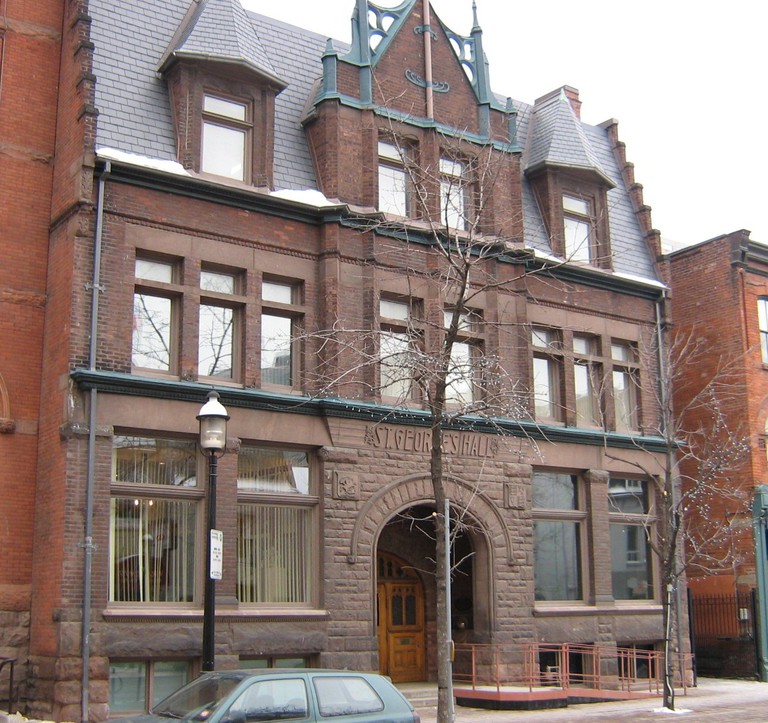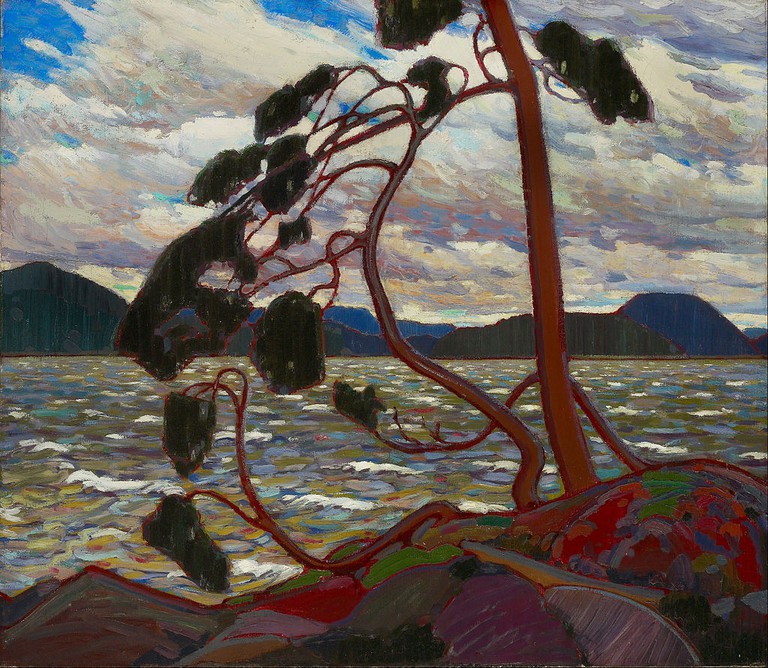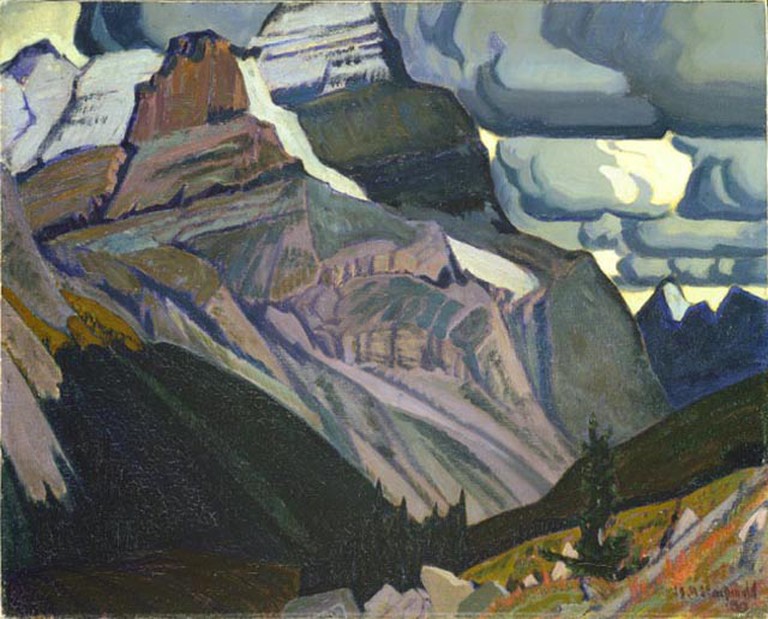Article by: The Culture Trip
Featured image by: Six of the Group of Seven, plus their friend Barker Fairley, in 1920. From left to right: Frederick Varley, A. Y. Jackson, Lawren Harris, Fairley, Frank Johnston, Arthur Lismer, and J. E. H. MacDonald. At The Arts and Letters Club of Toronto | Public Domain/WikiCommons
No discussion on Canadian art is complete without touching on the Group of Seven. After initially (unofficially) forming in the early 1910s, the group of artists formally exhibited between 1920 and 1933, forever changing the public’s impression of Canadian art and the Canadian landscape. Nearly a century later, the Group’s lasting legacy has caught global attention – from 2011’s Painting Canada Tom Thomson and the Group of Seven exhibition at London, England’s Dulwich Picture Gallery to 2015’s The Idea of North: The Paintings of Lawren Harris, which opened at LA’s Hammer Museum and was co-curated by actor-comedian-jack-of-all-trades, Steve Martin. The artists’ unflinching loyalty to both Canada’s art world and its landscape was one of the most significant art movements of the last century, so here is a quick refresher on Canada’s Group of Seven.
The Seven
The Group of Seven, as we now know them, formed in 1920, and was comprised of seven members: Franklin Carmichael, Lawren Harris, A.Y. Jackson, Frank Johnston, Arthur Lismer, J.E.H. MacDonald, and Frederick Varley. After Johnston left the Group in 1920 to move to Winnipeg, A.J. Casson was eventually invited to join in 1926. Edwin Holgate became a member in 1930, while LeMoine FitzGerald joined in 1932.

Toronto Beginnings
Although the Group of Seven are inextricably associated with Canada’s north, they actually met in the country’s largest urban centre: Toronto. Five of the members – Carmichael, Johnston, Lismer, MacDonald, and Varley – met at Grip Limited, a Toronto design firm. In 1913, they were joined by Jackson and Harris, who were befriended by Lismer at Toronto’s Arts and Letters Club and got to know the group. The Arts and Letters Club became a common spot for the artists to meet and discuss their ideas and art.
Having received financial support from Harris – who was heir to the Massey-Harris farm machinery fortune – and Dr. James MacCallum, they built the Studio Building in 1914, in Toronto’s Rosedale ravine. The Studio Building served as both a meeting place and studio. The informal group temporarily split up during the First World War while Jackson and Varley became official war artists.
It wasn’t until 1919 that the group gave themselves an official name. When they struggled to come up with a name, Harris dubbed them the ‘Group of Seven,’ which is how they’ve been referred to for nearly a century. Their first exhibition, in Toronto in 1920, proved to critics that the Canadian landscape was just as worthy of painting as Europe’s.

Not One of the Seven…
Another Canadian landscape painter, Tom Thomson is often (incorrectly) referred to as a Group of Seven member. However, Thomson died before the group officially formed, in 1917. The mysterious surroundings of Thomson’s death in July of 1917 in northern Ontario have become the stuff of Canadian art lore – a Twitter account, @TTLastSpring, was even created, detailing Thomson’s final months. A strong influence on the Group’s members, Thomson is closely affiliated with their group. Likewise, Emily Carr, one of Canada’s most renowned painters, is often associated with the group.

The Tenets of the Group of Seven
The Group strongly believed that a distinctly Canadian art movement could be established and developed through direct contact with nature. Pioneers of a new Canadian art form, they found new and inventive ways to depict landscapes – both in beauty, isolation, and awe.

Collectively, the artists were committed to exploring Canada’s unique landscape, including its rugged wilderness. Ontario’s McMichael Collection of Canadian Art, located just outside of Toronto in Kleinburg, has an impressive Group of Seven collection – over 6,000 paintings. While the painters were inspired by European Impressionism, the McMichael describes the Group’s style as breaking from the European tradition to reflect ‘an increasingly nationalistic sentiment.’ Among some of Canada’s most famous artists today, their art has to come to symbolize ‘what is the distinctly Canadian identity’ – no small feat for a uniquely multicultural nation.
While their work began in Ontario, the artists began to explore farther and farther away from their home province, including the west coast and the Arctic. The Group’s last formal show took place in 1931. At that point, their influence was so widespread that they no longer felt the need to exhibit as ‘The Group of Seven.’

Top Three Galleries to See Their Work
Thanks to the prolific nature of many of the artists in the Group of Seven, their works can be seen in larger and smaller galleries across Canada. Within Ontario, Canadian art lovers need to hit these three spots.
The McMichael
As mentioned above, The McMichael is the place to see the Group’s art, with more than 6,000 paintings in their collection. Moreover, six of the artists are buried in an onsite graveyard at the Gallery.
The McMichael, 10365 Islington Ave, Kleinburg, ON, Canada, +1 905 893 1121
Art Gallery of Ontario
Toronto’s AGO has established one of the premier collections of work by the Group of Seven and their contemporaries. The Group’s first exhibition in 1920 was at the Art Gallery of Toronto, now Ontario.
Art Gallery of Ontario, 317 Dundas St W, Toronto, ON, Canada, +1 416 979 6648
The National Gallery
Head to Ottawa, the nation’s capital, to check out The National Gallery‘s impressive collection. Their early purchases of paintings by Tom Thomson and the Group have resulted in a significant collection of works.
The National Gallery, 380 Sussex Dr, Ottawa, ON, Canada, +1 613 990 1985







